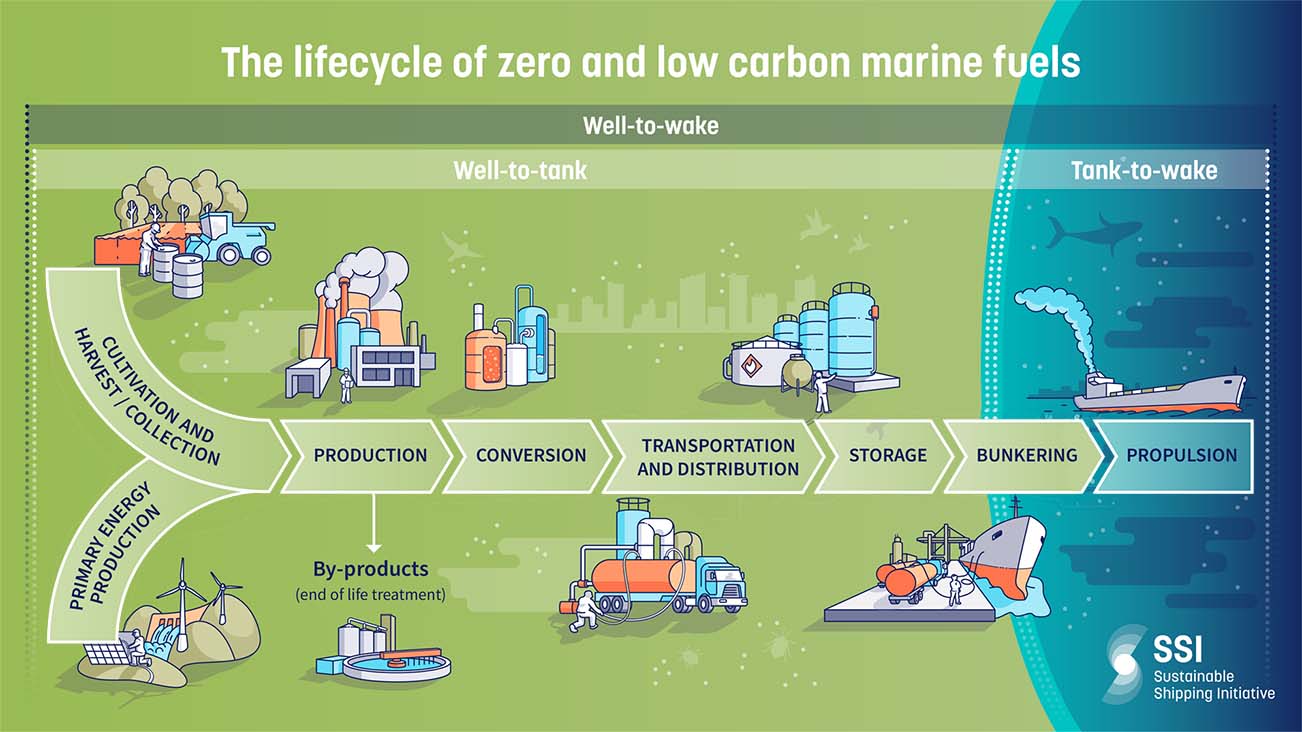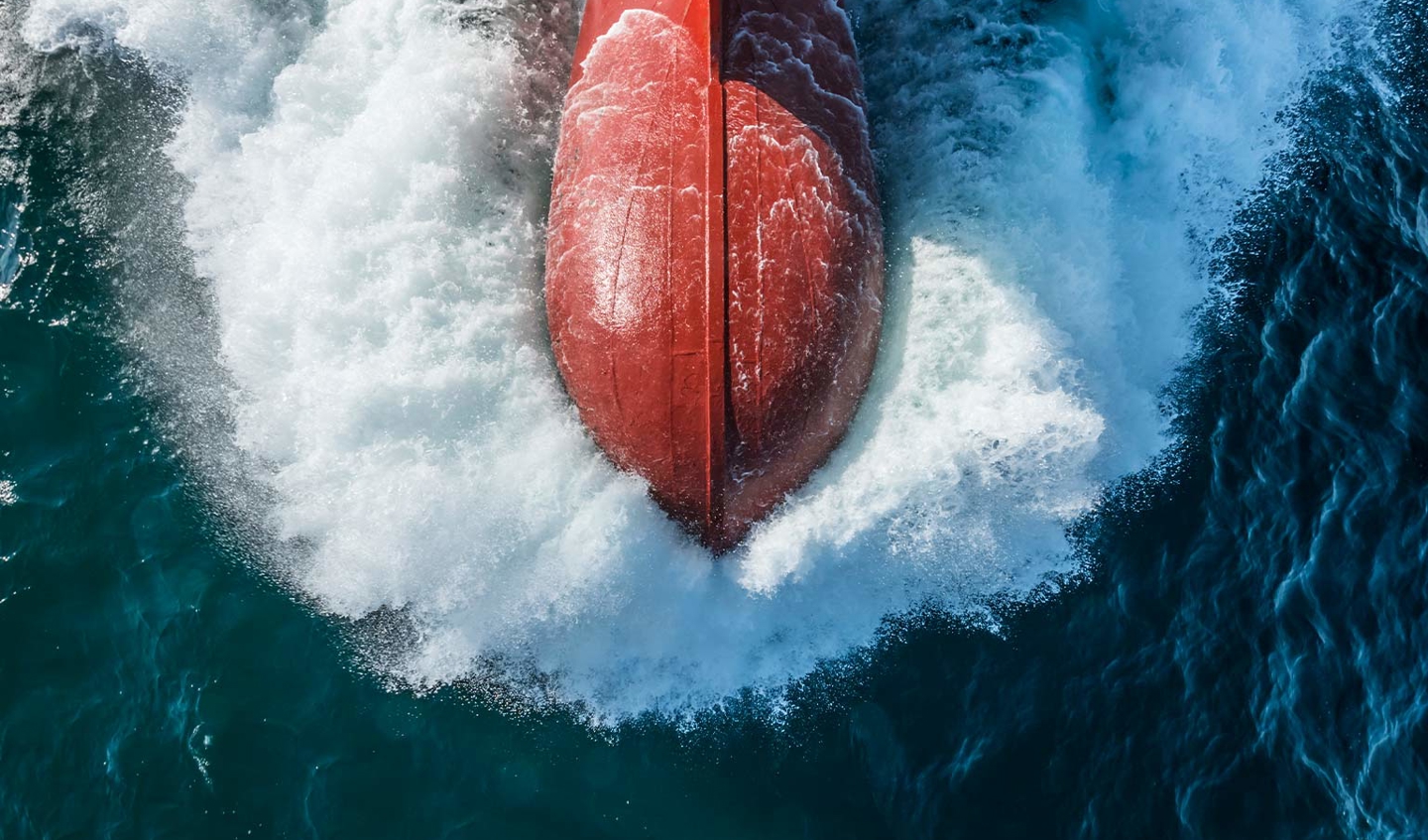There is no one-size-fits-all solution for shipping’s decarbonisation, but in order to set shipping on a path to fully decarbonise by 2050, the industry needs to end its reliance on fossil fuels and shift to zero and low carbon fuels, alongside technical and operational energy efficiency measures, improving resource use, and implementing alternative
propulsion methods.
In its Fourth GHG study, the International Maritime Organization predicts that over 60% of emissions reduction efforts by 2050 will be achieved by zero and low carbon marine fuels such as electrofuels (e.g., ammonia and hydrogen) and biomass‑derived fuels (e.g., biodiesel and bio‑methane).
But what makes a fuel zero and low carbon?
A zero and low carbon fuel is generally associated with zero or low emissions at point of combustion onboard a vessel. When discussing the lifecycle of a fuel, emissions resulting from onboard combustion are referred to as ‘tank‑to‑wake’ emissions. Many fuels under consideration for shipping’s decarbonisation can be considered as having zero or low emissions when only this stage of the fuel’s lifecycle is taken into consideration. However, in order to fully understand if a fuel is zero and low emissions a broader approach that looks at the whole fuel value chain (well-to-wake) is needed.
Well-to-wake includes all the operations that a fuel has gone through before being applied onboard (well-to-tank) as well as the combustion or propulsion process (tank-to-wake). For biomass‑derived fuels this includes the collection of residues or the cultivation of biomass. For electrofuels it includes the production of electricity, which is in turn used to produce hydrogen for the fuel. For all fuel types, it includes production through various means, any conversion process (e.g. gas to liquid), transportation between facilities, storage and distribution to the point of bunkering, and finally, the combustion or propulsion process on-board the ship.
All lifecycle stages prior to bunkering create emissions and impact the world around them. Therefore, in order for a fuel to be sustainable and zero or low carbon, it must take into account impacts and emissions across the full well-to-wake lifecycle.
At the same time, low GHGs and carbon intensity only cover a fraction of the sustainability issues that should be addressed. A sustainable fuel must be environmentally, socially and economically sustainable, and underpinned by the continuous improvement of its sustainability performance.
The Sustainable Shipping Initiative (SSI) has been working to develop a set of sustainability criteria that can be applied to all zero and low carbon fuels alongside members including LR, Maersk, The China Navigation Company, and WWF, as well as academic partner Copenhagen Business School (CBS) Maritime.

The work has identified a set of fifteen issues that encompass environmental, social, and economic factors, with corresponding principles and criteria, to provide clarity around the sustainability concerns of zero and low carbon fuels, and to ensure that sustainability is addressed alongside availability, cost, and technical feasibility in decarbonisation discussions.
- Lifecycle Greenhouse Gas (GHG) emissions
- Lifecycle Short‑lived Climate Forcers (SLFC) emissions
- Air quality
- Carbon source
- Electricity / Energy source
- Water
- Sustainable resource use
- Land use
- Ecological impacts
- Economic well‑being
- Social equity
- Social, labour, and human rights
- Food security
- Health, safety, and security
- Continuous improvement
Understanding sustainability issues from a lifecycle perspective allows for informed decision-making concerning value chain risks and helps direct choices for investment, purchase and consumption. Eventually, sustainability certification of zero and low carbon marine fuels can provide assurance to the organisations investing in zero and low carbon marine fuel options, promoting trust across the value chain, mitigating risk, and aiding in the selection of sustainable zero and low carbon options for shipping.
More information on SSI's sustainability criteria can be found on their website:









